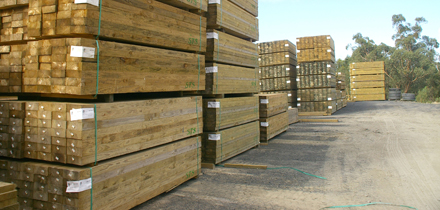Australia’s housing construction sector faces a serious timber supply gap by mid-century if the nation doesn’t move quickly to implement the billion new production trees plan, a new Forest and Wood Products Australia report has found. Source: Timberbiz
The final report released this week reveals the demand for new housing will rise from an average of 183,000 new dwellings per annum to an average of 259,000 per annum by 2050, driving huge demand for timber.
To bridge the supply gap, Australia needs to meet the One Billion New Production Trees goal and not rely on vastly increased imports to fill the gap.
“International demand for timber continues to surge as governments demand more timber in buildings and fibre to replace plastics to meet laudable climate goals,” The Australian Forest Products Association CEO Ross Hampton said.
“This is a good thing but will make it even harder to source imports to fill our own expanding timber demands.
“Australia has vast areas of land suitable for timber production, yet our plantation estate has been stagnant – and has even been going backwards in some places – for the last two decades,” he said.
“That has to be reversed and there is no time to lose. Forest industries look forward to working quickly with the Albanese Government to commence the rollout of the $86 million committed during the election campaign as the first tranche of funding required to get seedlings into the ground.”
The report also found that Victoria takes the lion’s share of the nation’s softwood imports with a staggering percent. In the first four months of 2022, this share jumped to 44%.
Victorian Forest Products Association CEO Deb Kerr said it was time to prioritise investment in the only renewable building material in existence, available at our doorstep was wood.
“Victoria is the state that depends on imported wood the most. That makes builders and processors vulnerable to price increases. Geographically speaking, our lack of proximity to overseas sources also works against us. It exposes us to global shortages and supply chain challenges that make other regions, such as North America, more appealing for exporters,” Ms Kerr said.
Other key findings of the report include:
- Victoria is the state with the highest dependency on imported wood, and some way ahead of the next-largest importers (NSW/QLD)
- Structural wood imports dominate Victorian imports (87%) and Europe is the dominant source for these imports (74%)
- Victoria is the most reliant on wood imports to provide for housing needs – whether for frames, floors, window frames, cabinetry, or the ubiquitous Aussie deck.
“We already are not growing enough timber for our own needs. Governments have been asleep at the wheel for decades, with a stagnant plantation estate and, more recently, the winding down of our sustainable, renewable, and responsible native timber industry here in Victoria,” Ms Kerr said.
“If the projected growth for Victoria is anything to go by, the gap that exists today will only widen.”
Master Builders Australia CEO Denita Wawn said the severe timber shortages experienced by the building industry had put a huge strain on thousands of building and construction businesses and contributed to the inflationary pressures that the industry had been experiencing for many months.
“The case for increasing the supply of locally grown timber is compelling and will remain so even as COVID related supply chain disruption eases,” she said.
“It’s a move that will support jobs and economic activity in the nation’s residential building sector.”






